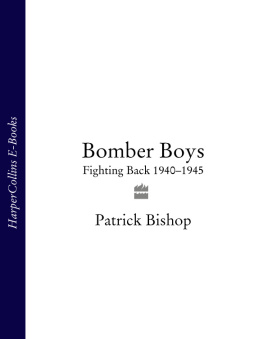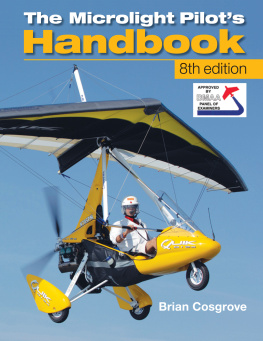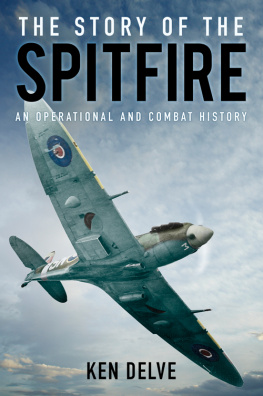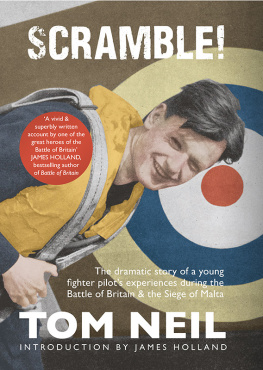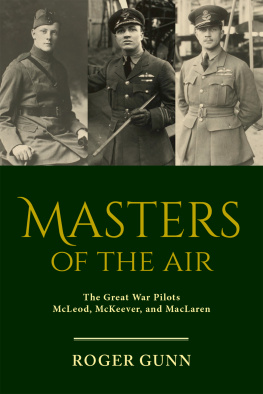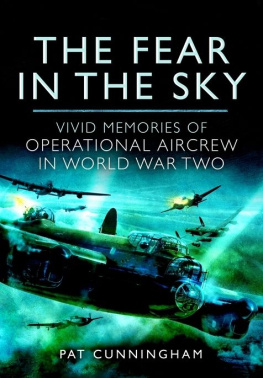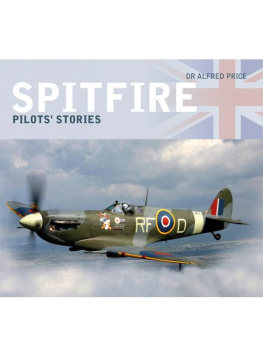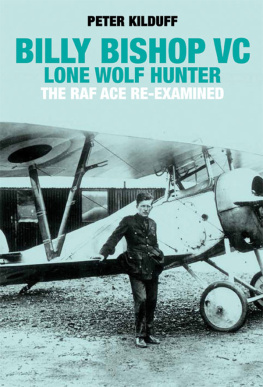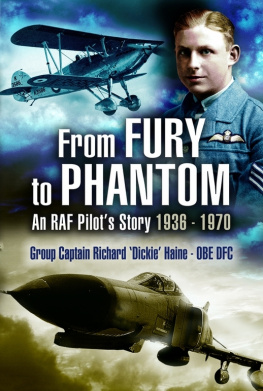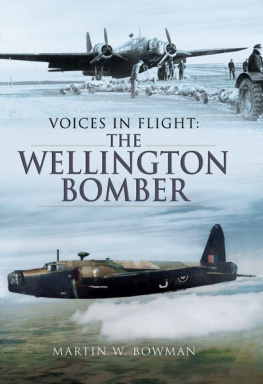CANADAS FIGHTING PILOTS
Copyright 2003 by Edmund Cosgrove; Introduction, notes and new format Brick Billing and The Golden Dog Press; photographs copyright by owners.
All rights reserved. No part of this publicationother than in brief form for review or scholarly purposesmay be reproduced, stored in a retrieval system, or transmitted, in any form or by any means, electronic, mechanical, photocopying, recording or otherwise, without the prior permission of the copyright holders.
NATIONAL LIBRARY OF CANADA CATALOGUING IN PUBLICATION
Cosgrove, Edmund, 1926
Canadas Fighting Pilots/Edmund Cosgrove.Rev. ed.
Includes bibliographical references.
ISBN 0-919614-97-3
1. World War, 1939-1945Aerial operations, Canadian.
2. World War, 1914-1918Aerial operations, Canadian.
3. Air pilots, MilitaryCanadaHistory.
I. Title.
UG635.C2C62003 940.5449710922 C2003-900767-7
Cover design and layout by gordongroup, Ottawa, Canada.
Printed in Canada.
Published by:
The Golden Dog Press, an imprint of Haymax Inc.
P.O. Box 393Kemptville, Ontario, Canada K0G 1J0
The Golden Dog Press wishes to express its gratitude to the Canada Council, the Ontario Arts Council and the Millennium Bureau of Canada for past support extended to its publishing projects.
Edmund Cosgrove
Canadas
FIGHTING
PILOTS
With an introduction by Brick Billing

Acknowledgements
The publishers and the editor would like to thank the following people for their help in the preparation of this book; Chris Carruthers of TextAlchemy, Inc. for his assistance in OCR scanning; John Lund of the London Free Press and DND for their help in obtaining photographs (and with cutline information). Every effort has been made to trace ownership and copyright. The publishers would welcome any information that would help with these acknowledgements.
Contents
The Air Wars in Context
The history of the Twentieth century has been profoundly affected by its two great wars, and this fact is reflected in the literature of the time. Our oftentimes horrified fascination with war, and with emotions and responses of those caught up in it, has been a fertile source for both fiction and non-fiction. In the Canadian context of the First World War, for example, the motivations of a generation which felt itself compelled to enlist and fight in what was essentially a foreign war, has long been rich grist for the mill of novelists. Canadian writers such as Timothy Findlay (The Wars), Hugh McClennan (Barometer Rising), and Michael Ondaatje (The English Patient) have attempted to explore and contextualize these feelings. they move their narratives in effect, beyond mere facts, and instead attempt to recapture some piece of the human event itself.
Novelists, however, are free to manipulate plots, as well as to create a contextualing setting against which they develop their characters actions. Ironically, no such contextualing information surrounds recollections of actual historical events. The appeal of fiction lies in its ability to answer all our questions as it moves to a dramatically definable climax. It is not necessary to understand the conditions under which soldiers fought and all to often died to enjoy a work of fiction. The novelist will provide us with the necessary clues and additional information we need.
The historian, on the other hand, is doubly hampered. First, he or she can only report the truth, as determined by the examination of the evidence, coupled with interviews and reports. Secondly, he or she must attempt to convey the surrounding context against which these events played themselves out. In the case of the air war fought in the First and Second World Wars, this task becomes Herculean.
The years that separate us from these two wars have seen a virtual explosion of technology. Aircraft today that fly at great altitudes are routinely pressurized, and even the most frequent flyer has little inkling of what it felt like to fly and fight in the aircraft of the World Wars. As such, it is often as difficult for us to imagine fighting a war from the wicker seat of a Great war biplane, or the noisy cold inside a second World War bomber, as it is to imagine fighting alongside Wolf at Quebec, or against Perry on Lake Erie. In fact, given the recent popularity of re-enactment societies, as well as the resurgence of interest in Tall ships, the average person is far more likely to have a nodding acquaintance with these events than with the aerial battles of the first and second World Wars.
It is precisely for these reasons that a book such as Canadas Fighting Pilots is so useful. Edmond Cosgrove has written an eloquent testimony to the remarkable heroism displayed by Canadian pilots in both the First and Second World Wars. Gathering together the stories of some of Canadas greatest pilots, it is a classic in its field, and takes us directly into the world of aerial combat in the two world wars.
Canadas Fighting Pilots outlines the exploits of such legendary figures as: William Billy Bishop; whose daring, solo dawn raid on a German airfield won him the Victoria Cross; William Barker; who fought single-handedly an entire squadron of enemy aircraft; George Buzz Beurling, the ace of Malta who achieved a remarkable score of victories fighting from an island under siege; Andrew Mynarski, whose attempts to save the life of a trapped comrade, high over Germany, ultimately cost him his own. The original author, a longtime CBC broadcaster, has written the book in a winning and entertaining manner that is still clear to the non-aviation enthusiast.
This latest treatment preserves all of Cosgroves style and attention to detail. What it hopes to add is information about these times and events that would no longer be common knowledge to the average reader. As a former pilot with intimate knowledge of these now vintage aircraft, I know firsthand how difficult it is to fly and maintain them. Even relatively sophisticated aircraft such as the Spitfire Vcs that George Beurling flew over Malta, would seem hopelessly outdated by todays standards.
Also, most people have no experience with the tactics and maneuvers necessary in aerial combat. Aviation has advanced so much that even modern military pilots would be unfamiliar with combat as it was fought in 1918, or even 1944. Changes in technology, aircraft speed and strength, even something as mundane as the clothing issued to pilots, all contributed to how these air battles were fought.
Great War aerial combat
It is hardly an understatement that the Western Front of World War I was unlike anything seen before or since. Years of unremitting trench warfare had effected a profound change on not only the physical landscape, but on the social one as well. Just as the countryside of France and Belgium had been devastated by the largest bombardments in history, so too had traditional views of warfare been exploded. The earlier enthusiasm that had led such people as Arthur Lowe, a prominent, contemporary Canadian social historian to declare a few years earlier that A nice little war would be just what the country needed to cap its development and give it a sense of corporate unity had been tempered by years of casualty lists. Instead, a grim sense of purpose, a feeling to make whatever sacrifices were necessary to end the bloody conflict, prevailed. By the end of the first year of the war, no one was under the illusion that warfare could be considered to be anything other than what it really was: dirty, unglamorous, uncomfortable, and extremely dangerous.
Next page

